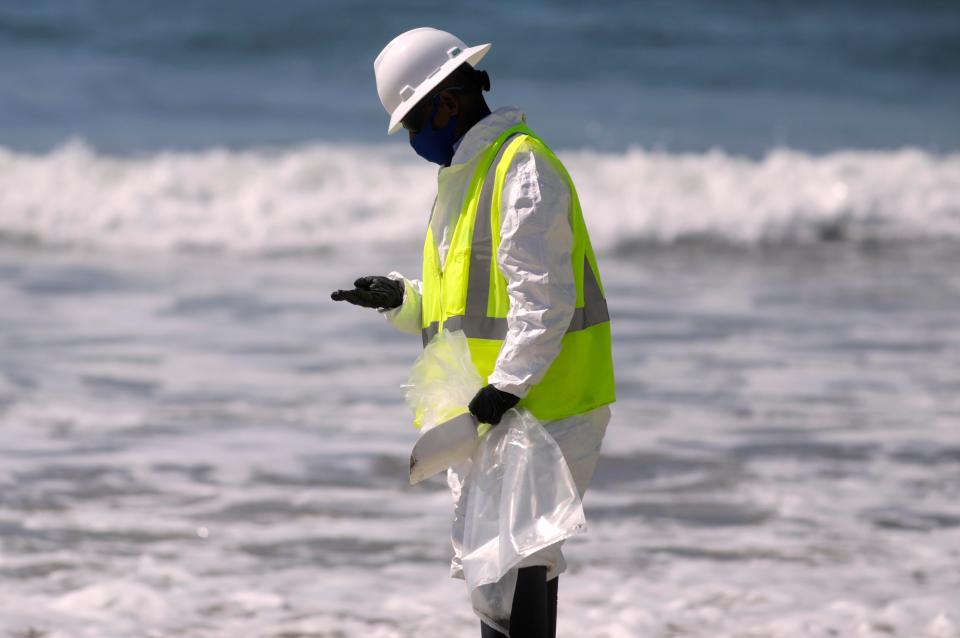California Moves To Ban New Oil Wells Within Half-Mile Of Homes, Schools
California is seeking to dramatically expand protections for communities near oil drilling operations following a large oil spill off the coast of Southern California earlier this month.
Gov. Gavin Newsom (D) said Thursday morning his administration has drafted a rule proposing a mandatory 3,200-foot barrier between new oil and gas wells and homes, schools and hospitals, a substantial shift as the state previously had no limit in many areas and effectively allowed drilling in many Californians’ backyards. Following a public comment period and economic analysis, the regulation could go into effect in 2023.
The draft rule from the California Geologic Energy Management Division will go beyond the 2,500-foot buffer proposed by environmental groups.
“Our reliance on fossil fuels has resulted in more kids getting asthma, more children born with birth defects, and more communities exposed to toxic, dangerous chemicals.” Newsom said in a statement Thursday. “We are committed to protecting public health, the economy and our environment as we transition to a greener future that reckons with the realities of the climate crisis we’re all facing.”
Newsom made the announcement from Wilmington, California, home to the Wilmington Oil Field. The site is the third-largest oil patch in the contiguous United States with more than 1,550 active wells. But the community in South Los Angeles is also home to about 50,000 people, more than 90% of whom are people of color, Grist notes.
Some live less than 200 feet from the Wilmington field and have reported a bevy of health effects linked to the nearby production.
“After years of delay, we are encouraged by this announcement from the Newsom administration, which sends a strong signal that oil and gas has no place in neighborhoods,” Neena Mohan, the California Environmental Justice Alliance’s climate justice manager, said in a statement. “We’re ready to carry this rule home and make sure it actually accomplishes what we need it to accomplish: the end of neighborhood oil and gas drilling.”
California is unique in its past fondness for neighborhood drilling sites, and until now there were no statewide rules mandating a setback distance for oil and gas sites from communities. Some counties have exclusion zones, known as setbacks, to protect local residents, but Los Angeles County had none despite decades of activism from local community health groups.
Grist notes that many oil-producing states like Colorado, Pennsylvania and even Texas already have such regulations. Newsom has faced pressure to do so across California in recent months, with environmental groups noting his office has issued 138 oil permits for operation in state waters since he took office, including five new drilling permits. Onshore, the number issued is more than 9,000 since the start of 2019, according to the group Consumer Watchdog.
More than 2 million Californians live within half a mile of an oil well, including many people of color.
Newsom’s shift in policy came just a few weeks after a pipeline leaked up to 131,000 gallons of crude oil into the waters of the coast of Huntington Beach in Orange County, causing a mileslong oil slick and renewing concerns about aging fossil fuel infrastructure in the waters off California. The spill, from a line owned by the Texas-based Amplify energy, threatened delicate coastal wetlands and closed some of the nation’s most iconic beaches for days as cleanup crews swept the sand for globs of oil.
It was the state’s largest oil spill since 2015, and Newsom foreshadowed that he would take action to transition state support away from fossil fuels.
“It’s time once and for all to disabuse ourselves that this has to be part of our future. This is part of our past,” Newsom said earlier this month. “We can moralize and talk about the good old days, but at the end of the day, this isn’t about the stale air of normalcy but the fresh air of progress.”
California’s attorney general, Rob Bonta (D), vowed to hold people accountable for the spill, calling the event an “environmental disaster with far-reaching consequences” for wildlife.
This article originally appeared on HuffPost and has been updated.




